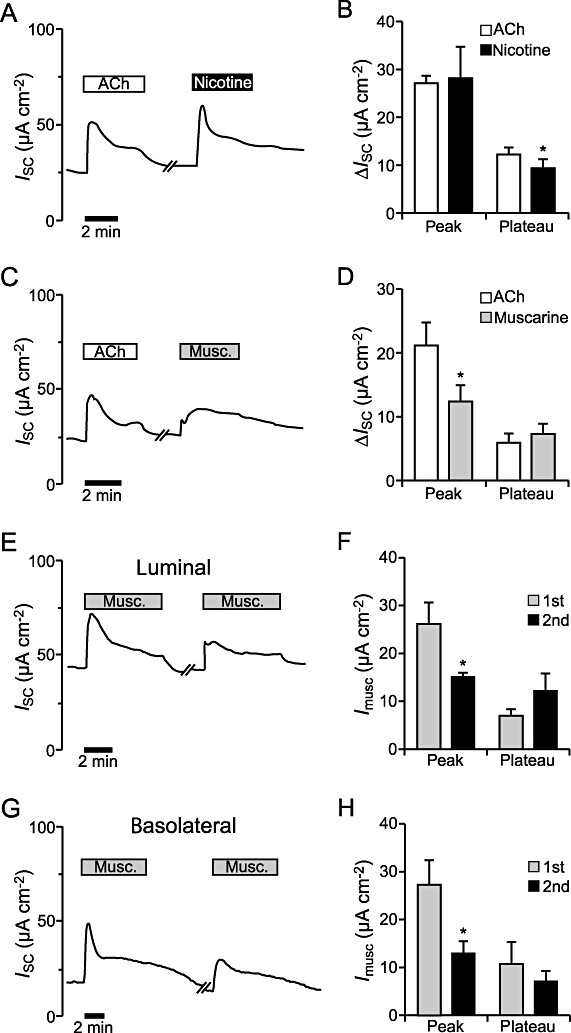Figure 7.

Influence of muscarine and nicotine on the ion transport in mouse tracheal epithelium. (A) The current trace shows a typical course of the ISC when 100 µM ACh was applied to the luminal side of the tracheal epithelium, washed out for 5 min, and then nicotine (100 µM, luminal) was added. (B) There was no significant difference between the ACh- and the nicotine-induced peak (n= 6, P= 0.85). The nicotine-induced plateau current was significantly lower than the ACh-induced plateau current (n= 6, P < 0.05). (C) Luminal application of 100 µM muscarine to the tissue led to an increase in the ISC, similar to the response observed to ACh (100 µM, luminal). The washing time between ACh and muscarine application was 5–10 min. (D) The muscarine-induced initial current increase was significantly reduced compared with the ACh peak (n= 6, P < 0.05). The plateau currents induced by ACh and muscarine were similar (n= 6, P= 0.55). (E) Repeated application of 100 µM muscarine on the luminal side of the epithelium led to a current increase that was divided into a transient peak and a plateau phase upon both applications. The washing time between the two applications of muscarine was 10 min. (F) The peak current of the second muscarine effect (n= 5) was significantly reduced compared with the first application (n= 7, P < 0.05), whereas the plateau currents of the first (n= 7) and the second effect (n= 5) were similar (P= 0.15). (G) Basolateral application of 100 µM muscarine led to a biphasic current increase that was divided into a transient peak and a plateau phase and repeatable upon a second application. A time period of about 10 min lay between the repeated muscarine administrations. (H) The peak current of the second basolateral muscarine effect was significantly reduced compared with the first application (n= 5, P < 0.05), whereas the plateau currents were similar (n= 5, P= 0.21).
